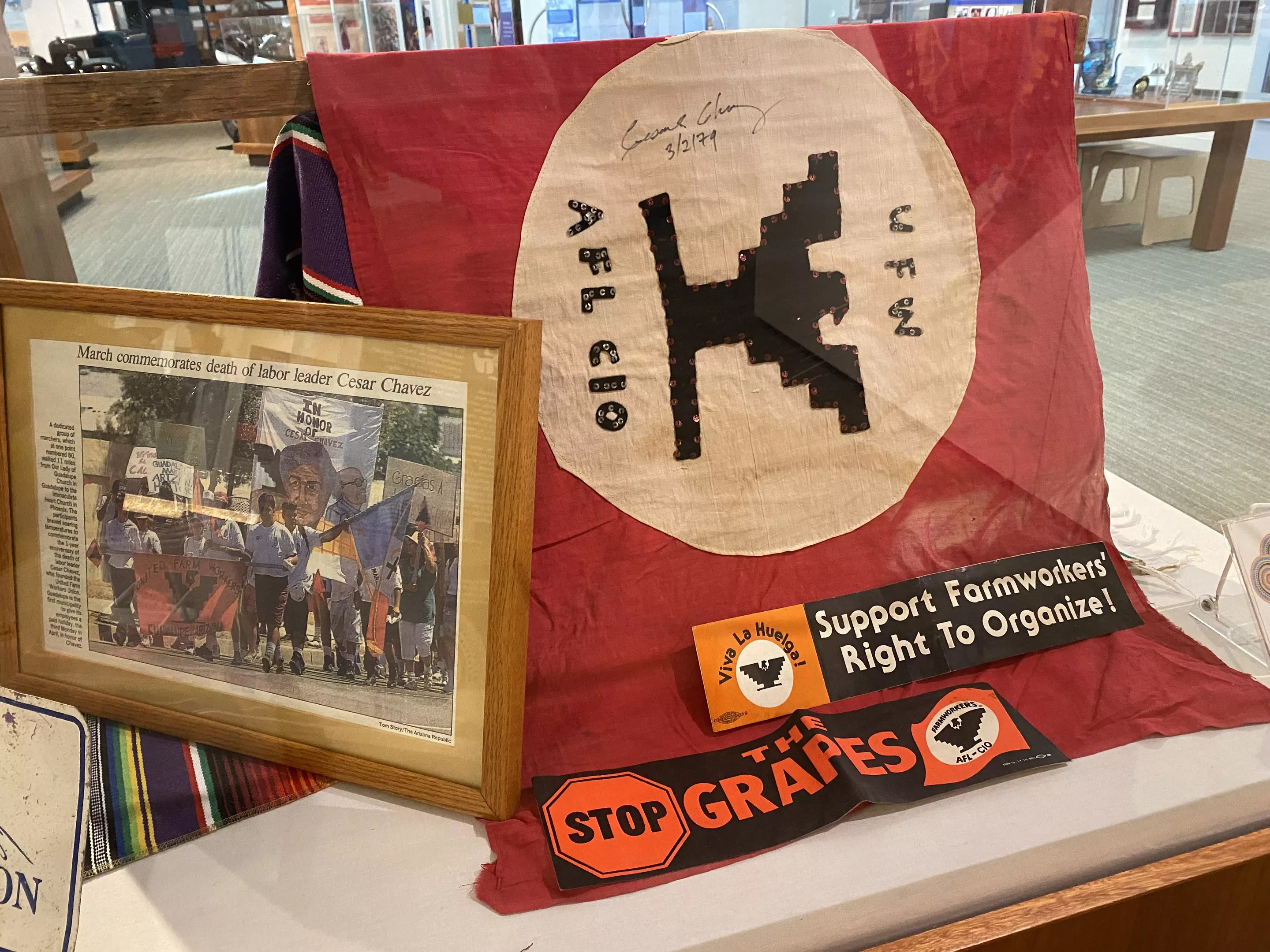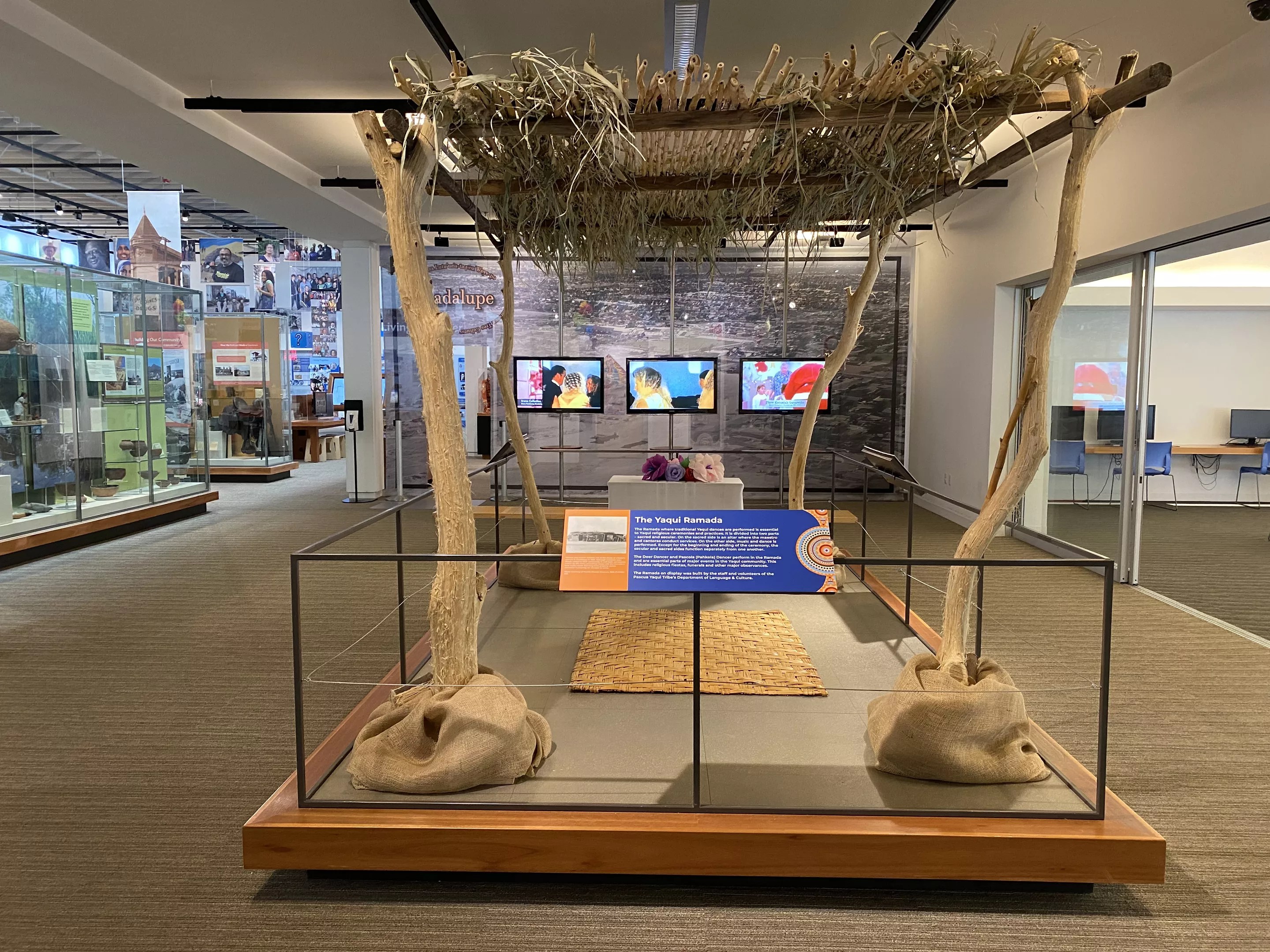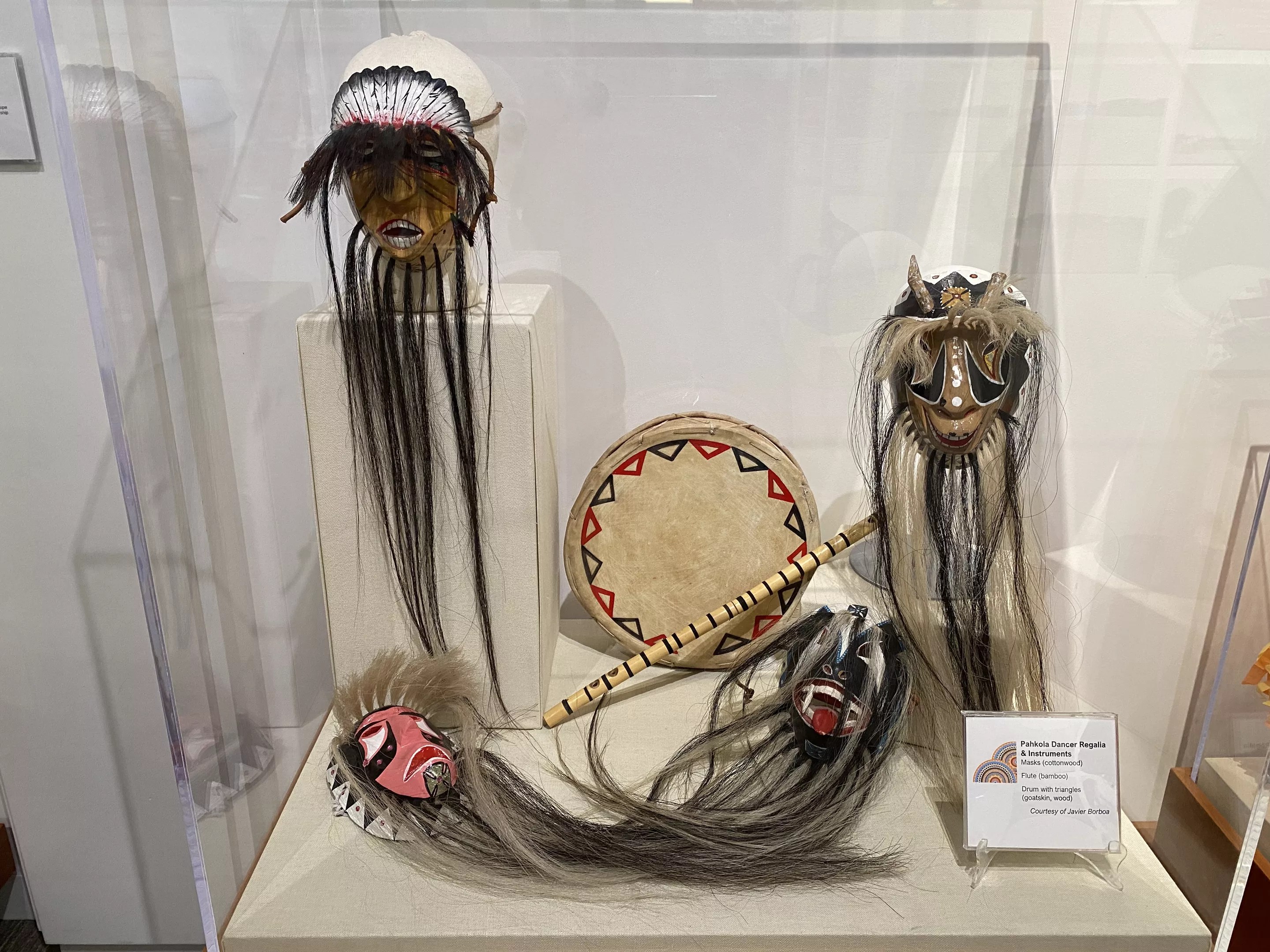
Geri Koeppel

Audio By Carbonatix
An exhibit that recently went up at the Tempe History Museum gives an in-depth look at a tiny but fascinating area of the Valley that most people know little about: the town of Guadalupe.
“The story really is about the fact that a lot of people may not recognize that Guadalupe is this rich, resilient, wonderfully culturally diverse group of people,” says Brenda Abney, museum manager. “If they drive through, they might miss that entirely.”
The exhibit, which opened on November 19, and runs through July 29, is titled, “Guadalupe: Where Three Cultures Flourish.” Those include the original Yaqui settlers, as well as the Mexican and Anglo people – including Catholic and Presbyterian missionaries – who arrived later.
The museum worked closely with the Guadalupe Historical Society – which hopes to eventually open its own museum in town – as well as the Pascua Yaqui tribe, the town of Guadalupe, and a committee of community members on the exhibit.
We’re thankful for you. Are you thankful for us?
We feel thankful for our staff and for the privilege of fulfilling our mission to be an unparalleled source of information and insight in Phoenix. We’re aiming to raise $30,000 by December 31, so we can continue covering what matters most to this community.
Help us continue giving back to Phoenix.
Abney and museum staff wanted to spotlight Guadalupe to bring attention to the town’s positive attributes and the historical and cultural tapestry that makes it unique.
“In our permanent exhibits and other exhibits, there have been regional mentions of communities like Guadalupe,” Abney explains, “but we’ve never had one that focused specifically on Guadalupe. In fact, I don’t think there’s ever been an exhibit that’s focused on the town of Guadalupe.”

A ramada greets visitors to the Guadalupe exhibit at Tempe History Museum.
Geri Koeppel
A full-size ramada welcomes visitors when they enter the exhibit at Tempe History Museum. Behind it, a series of home videos featuring Guadalupanos (residents of Guadalupe) are screened.
The gallery includes panels of historical and contemporary information about the town along with household and ceremonial items, all on loan from community members.
Everything from old photos to deer dancer regalia and instruments are on display. An AFL-CIO flag signed by Cesar Chavez highlights the town’s support of workers’ rights.
“This exhibit relied very heavily on the contributions of community because we only had a couple of objects and a handful of photographs that related to the town,” Abney says. “There’s a lot about the Yaqui, in particular, as founders of the town.”
Another element of the exhibit is 34 works of art by contemporary Guadalupanos in the Community Room Gallery. The art features themes in Yaqui culture and in Guadalupe in particular, including the stunning Catholic church in the center of town.
Guadalupe, with a population of more than 5,000, is now the second-largest community of Pascua Yaqui tribal members in the United States; the largest is near Tucson. Yaqui people from Sonora, Mexico, were familiar with the area because of trade routes, and many fled Mexico in the late 1800s after a failed uprising against then-President Porfirio Díaz. They settled in present-day Arizona.
Many are confused why Guadalupe is “sandwiched” into Tempe on the north, east, and south (its western border is the I-10 freeway). But the opposite is true: It existed before Arizona even got statehood in 1912.
“Everything grew around us,” says Ismael C. Osuna, president of the Guadalupe Historical Society. “We’re right in the middle of a big city holding onto the old traditional ways. I’m proud of my people because of that. It shows the resiliency of our people.”
The community began on a plot of land that is now Guadalupe Cemetery, north of Baseline Road and west of Hardy Drive in Tempe, about a mile north of current-day Guadalupe. Part of what prompted the research, Abney notes, is that many Hispanic residents of Tempe are buried there.
“Our people still use it to bury our loved ones there,” Osuna says, and to celebrate Día de Muertos there. Others are welcome to observe the annual holiday, which honors the souls of dead relatives with offerings, as long as they’re respectful, he adds.
Osuna explains that after some land disputes, a new plot of 40 acres was deeded to the residents by the federal government in 1914, and his people settled where they are now. Despite the community’s deep roots here, it wasn’t incorporated until 1975.
“My grandfather lived to be 93 years old,” Osuna says, “and he saw Guadalupe from the humble beginnings, from a few houses here and there and desert land. I used to love sitting with him, and he would tell me all these stories about his time as a child [and] the changes he saw.” His grandfather died in 2020.

Pahkola Dancer regalia and instruments — masks, flute, and drum — are among many ceremonial objects loaned by the community of Guadalupe for the exhibit at Tempe History Museum.
Geri Koeppel
At the ribbon cutting for the exhibit in November 2022, Osuna says, he was glad to see how many people in the community attended and were excited about it.
“Getting a lot of positive feedback was one of the highlights of working on this project and made it all worth it,” he says. “The positive feedback and those smiles – that’s something I’ll always carry with me.”
Osuna added, “I was happy to see we were able to shed a different light on the community. Everybody here in Guadalupe is proud to be from Guadalupe; proud to hold onto their culture, traditions, language.”
“Guadalupe: Where Three Cultures Flourish.” Through July 29. 10 a.m.-5 p.m. Tuesday through Saturday. Tempe History Museum, 809 East Southern Avenue, Tempe. Admission is free. Visit tempe.gov.